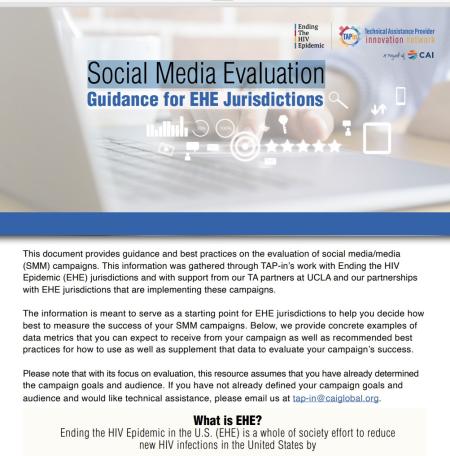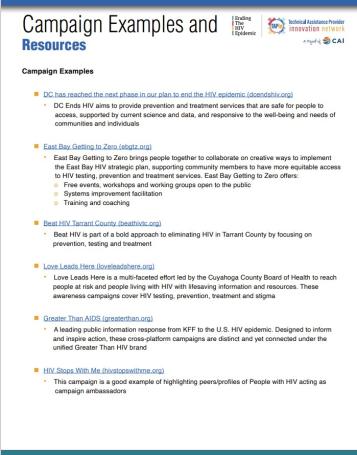This toolkit provides guidance and best practices on the evaluation of social media/media (SMM) campaigns. The information is meant to serve as a starting point for EHE jurisdictions to help you decide how best to measure the success of your SMM campaigns.
Below, we provide ready-to-use- tools, concrete examples of data metrics that you can expect to receive from your campaign as well as recommended best practices for how to use as well as supplement that data to evaluate your campaign’s success.
This information was gathered through TAP-in’s work with Ending the HIV Epidemic (EHE) jurisdictions and with support from our TA partners at UCLA and our partnerships with EHE jurisdictions that are implementing these campaigns.
Please note that with its focus on evaluation, this resource assumes that you have already determined the campaign goals and audience. If you have not already defined your campaign goals, and audience and would like technical assistance, please email us at [email protected]
This resource was developed by


